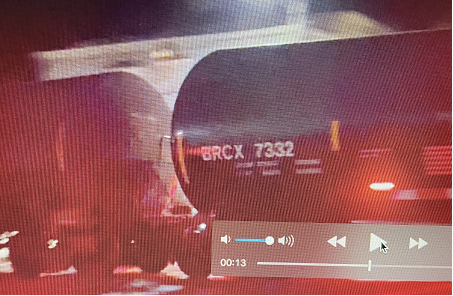The Whole Fracking Enchilada
October 1, 2010Air Pollution Becoming a Basin Concern: Ozone levels in Utah
October 5, 2010Questions over how natural gas drilling affects air quality have raged across North Texas this year, with much of the focus on toxins including benzene and toluene. But more questions are coming up about a chemical more associated with paint and construction materials than drilling: formaldehyde.
Drilling rigs do not emit formaldehyde, but it is a byproduct of the combustion engines used in the compressor stations that pump gas from wells to transmission lines. The Environmental Protection Agency published a draft report in June declaring formaldehyde a carcinogen and has a hand in regulating its emissions.
Environmental scientists say the danger of formaldehyde in the air is twofold. Some researchers believe that at lower levels, it accelerates the formation of ozone, the main ingredient of smog. At higher levels, formaldehyde becomes a direct health risk, irritating the eyes, nose and throat, and causing wheezing.
Formaldehyde had rarely come up in discussions about drilling until this summer, when Dish Mayor Calvin Tillman announced that he was selling his home because of concerns that natural gas operations around the tiny town were affecting his kids’ health. Tillman said both of his sons had awakened at night with nosebleeds.
“When I put out the message that my kids were getting nosebleeds, I got a ton of e-mails back saying, ‘It’s formaldehyde,'” Tillman said. He asked the Texas Commission on Environmental Quality to look into it.
Michael Honeycutt, the state agency’s director of toxicology, said Tillman’s was the first request he could recall for formaldehyde testing related to gas drilling. If formaldehyde emissions from compressor stations were a serious problem, he said, the agency would surely find high levels in Dish, which is near multiple compressor stations.
The agency took 23 one-hour samples around Dish in June. The highest reading was 4.8 parts per billion by volume. The 2008 state average for formaldehyde was 2.44 parts per billion, according to state documents.
The state agency’s long-term screening level for formaldehyde was 8.9 parts per billion by volume. That’s the level at which officials believe that health problems are possible if someone were exposed continuously for 70 years.
Honeycutt noted that the formaldehyde levels in Dish were comparable to the amount naturally produced in the human body.
“Median level you would expect to find in a person’s breath is 4 parts per billion. That’s about the same range we found in the Dish monitoring,” Honeycutt said.
Dish paid for its own air testing in July and found no elevated levels of formaldehyde, Tillman said. He said he is still concerned that the state’s testing reported levels higher than would be expected in a rural community.



